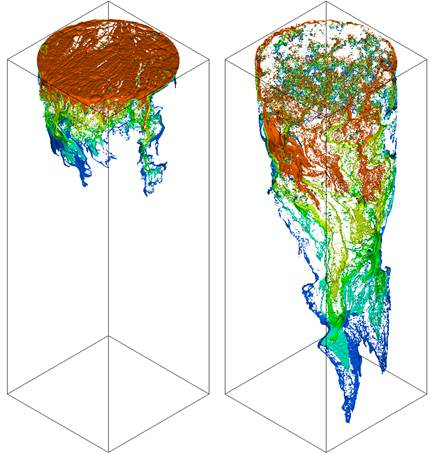Multiscale Subsurface Biogeochemical Modeling

Simulation of flow inside an experimental packed bed, performed on Franklin
Why it matters: Important applications requiring these complex multiscale, extensive time period simulations (100s-1000s years) include the fate and transport of microbial and other contaminants in aquifers, bioremediation of metal and radionuclides, and geologic carbon sequestration.
Accomplishments: The goal of this SciDAC Science Application is to characterize and model natural subsurface heterogeneity and its impact on biogeochemically reactive transport in groundwater systems. The outcome will be an integrated multiscale modeling framework that can directly link different subsurface flow, transport, and reaction process models at continuum, pore, and sub-pore scales.
Investigators: Timothy Scheibe, Bruce Palmer, Alexandre Tartakovsky, and Yilin Fang, Pacific Northwest National Laboratory; Paul Meakin, Idaho National Laboratory








